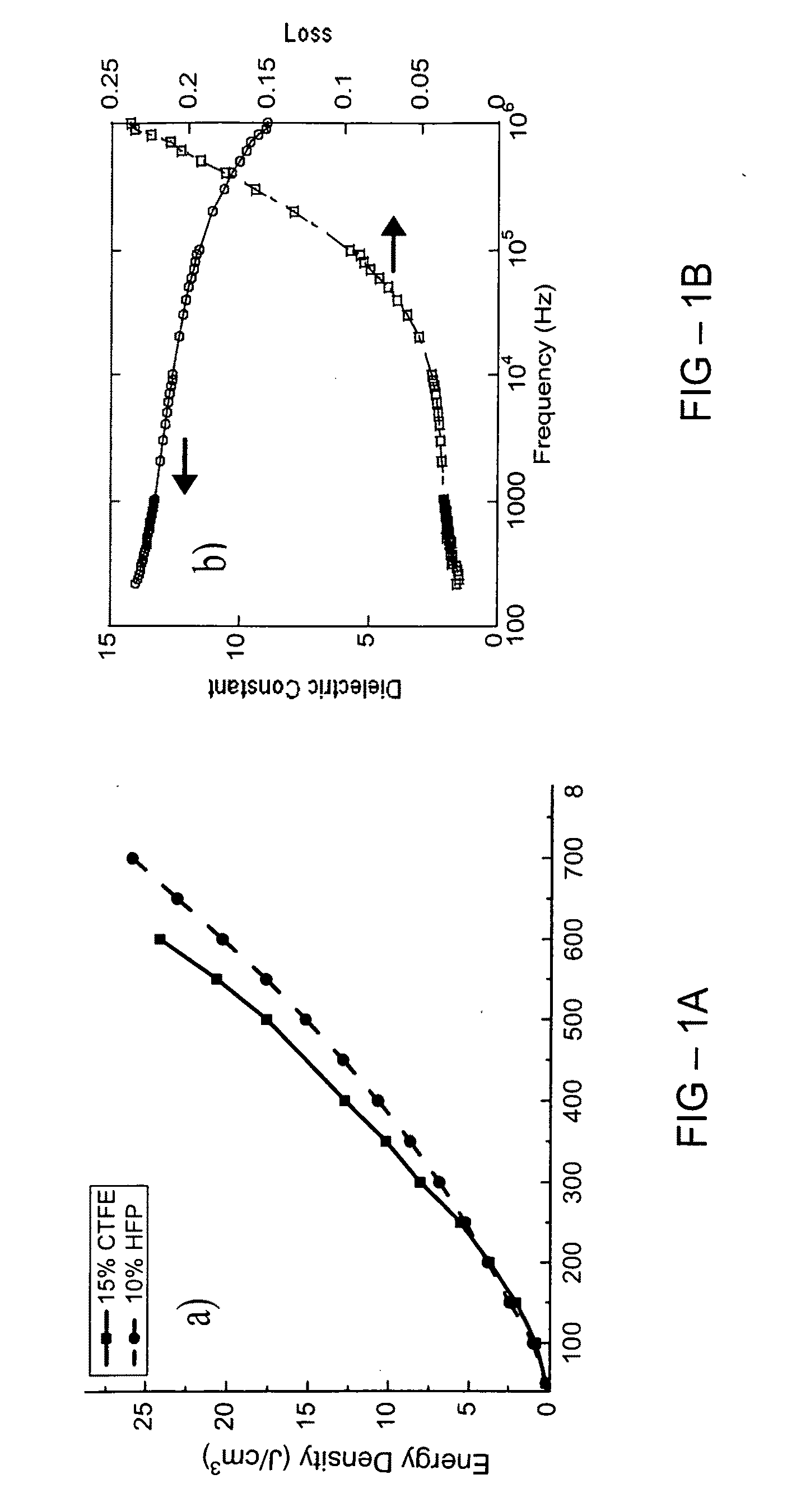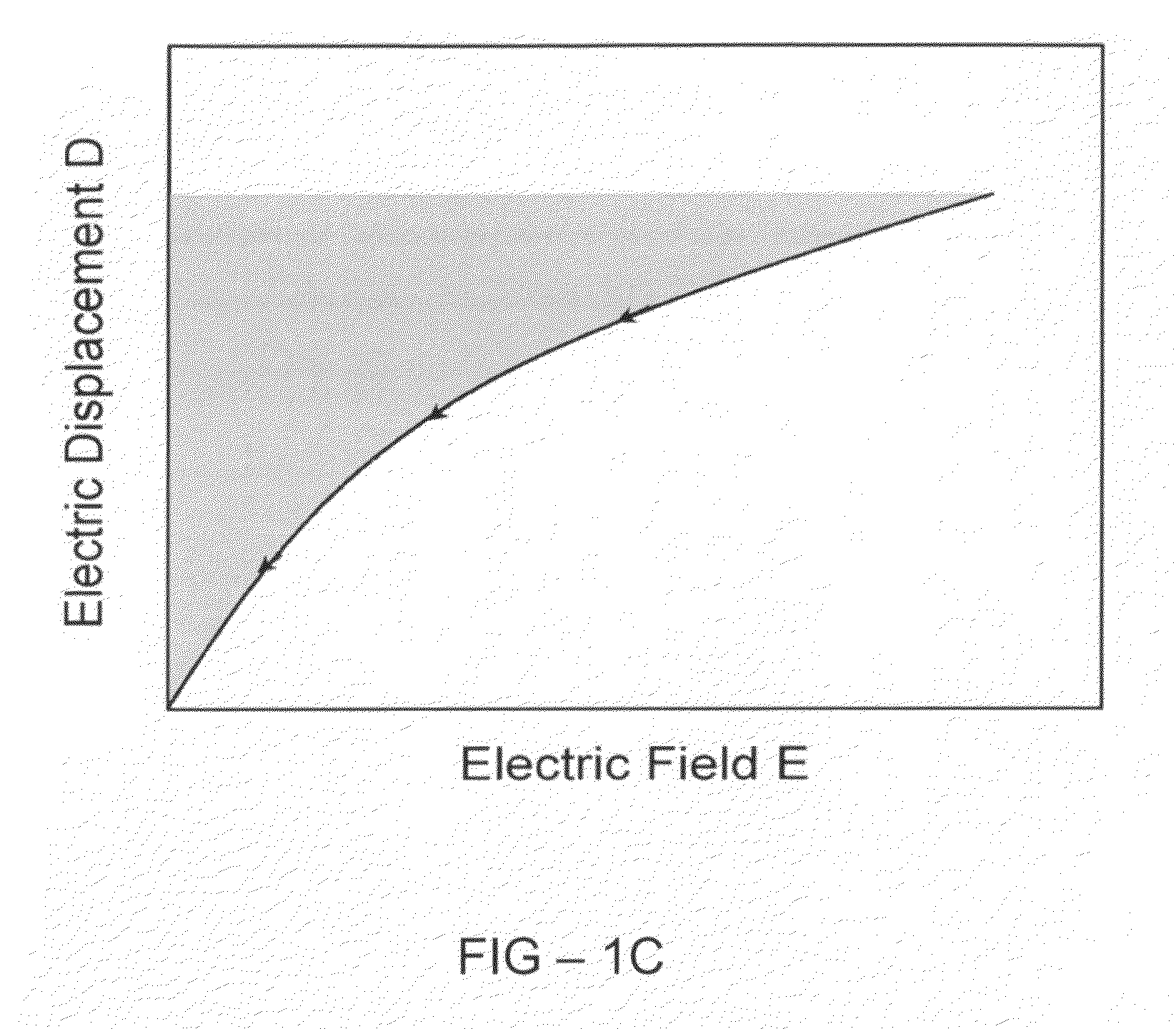Methods to improve the efficiency and reduce the energy losses in high energy density capacitor films and articles comprising the same
- Summary
- Abstract
- Description
- Claims
- Application Information
AI Technical Summary
Benefits of technology
Problems solved by technology
Method used
Image
Examples
Embodiment Construction
[0051]Recently, we discovered and developed a class of polar fluoropolymers which show discharged energy densities >10 J / cm3, in some examples >15 J / cm3, and in some examples >25 J / cm3, with fast discharge times, such as approximately 1 millisecond. This class of fluoropolymers also exhibits a reasonable dielectric loss (e.g. less than 5% @ 1 kHz).
[0052]FIG. 1A shows the discharged energy density directly measured from a polar-fluoro-copolymer as a function of field in a capacitor. FIG. 1B shows the dielectric properties as a function of frequency for a P(VDF-CTFE) film, which is ˜3% (0.03) at 1 kHz to 10 kHz frequency range. The data were acquired at room temperature from stretched P(VDF-CTFE) and P(VDF-HFP) copolymer films.
[0053]However, these high energy density polar fluoropolymers exhibit increased energy loss at high electric field, as discussed in further detail below. Embodiments of the present invention include approaches to improve the efficiency and reduce the energy loss...
PUM
| Property | Measurement | Unit |
|---|---|---|
| Fraction | aaaaa | aaaaa |
| Fraction | aaaaa | aaaaa |
| Thickness | aaaaa | aaaaa |
Abstract
Description
Claims
Application Information
 Login to View More
Login to View More - R&D
- Intellectual Property
- Life Sciences
- Materials
- Tech Scout
- Unparalleled Data Quality
- Higher Quality Content
- 60% Fewer Hallucinations
Browse by: Latest US Patents, China's latest patents, Technical Efficacy Thesaurus, Application Domain, Technology Topic, Popular Technical Reports.
© 2025 PatSnap. All rights reserved.Legal|Privacy policy|Modern Slavery Act Transparency Statement|Sitemap|About US| Contact US: help@patsnap.com



